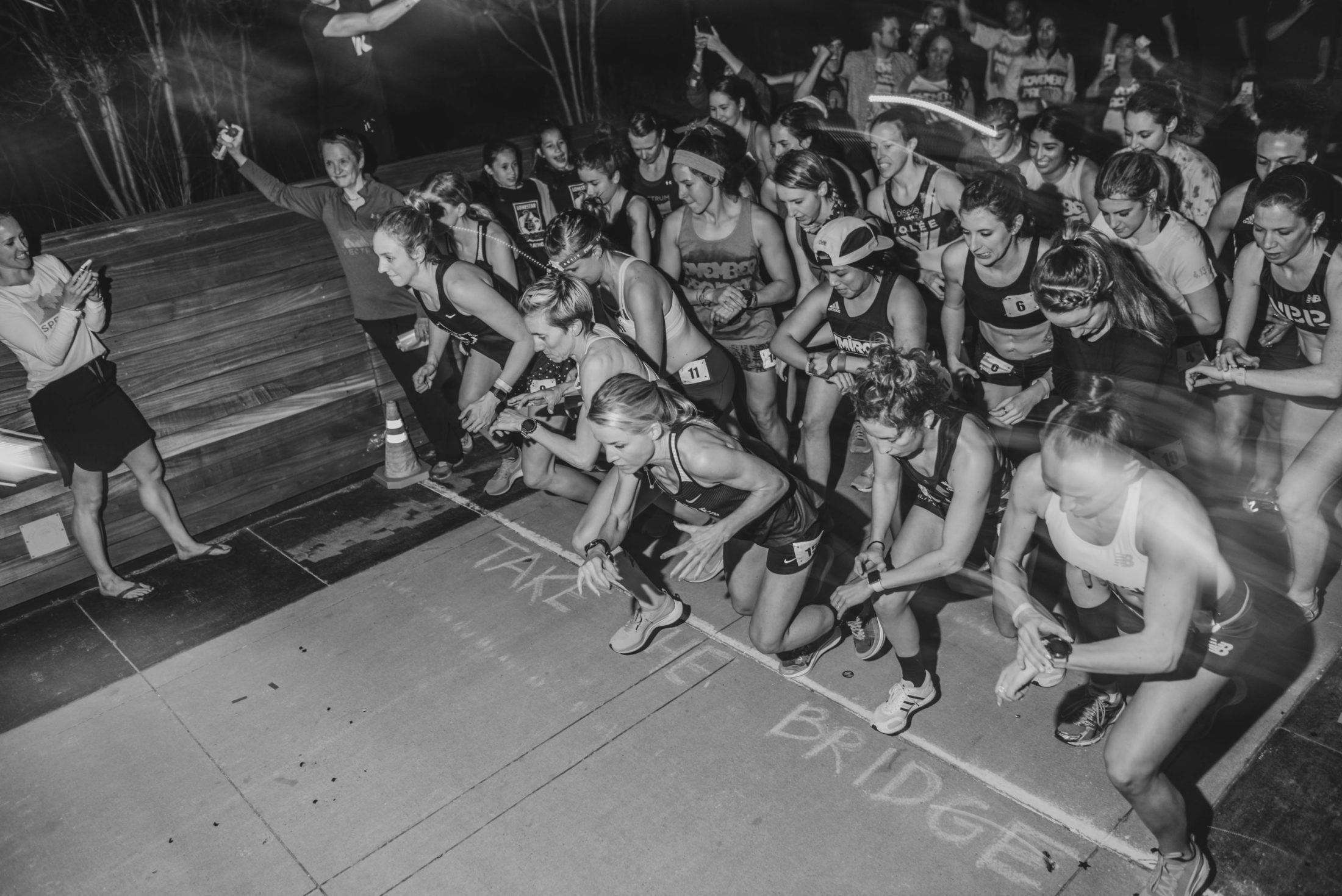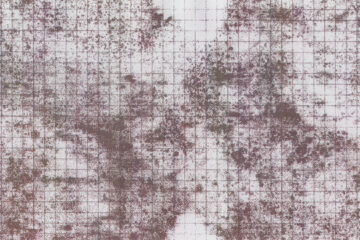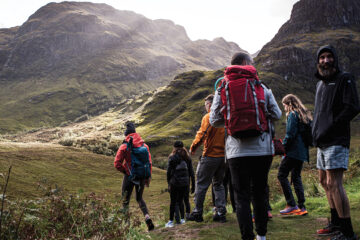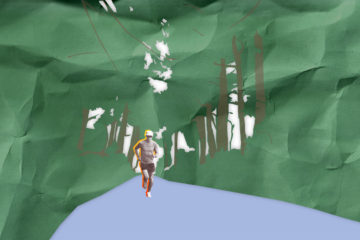words by: Simon Freeman and Darcy Budworth
photography by: Matt Bradford and Simon Roberts
generously provided by: like the wind magazine
The basic definition of a bridge is simply a structure that spans a geographical feature, for example a body of water, a valley or a road. Bridges are built to provide passage over something that would impede travel otherwise. And a bridge is designed to allow passage underneath it.
The first bridges were probably intentionally felled trees. And from there development happened early in mankind’s evolution. We know that Neolithic people created boardwalks to cross marshes in England 6000 years ago.
It seems that getting from one place to another has been one of our ancestors’ obsessions.
Since those early, crude crossings bridge building has ceaselessly developed and evolved. And in many cases, bridges have become cultural icons in their own rights. Ask anyone to think about bridges and they will almost certainly start coming up with a list of famous spans – Tower Bridge, Sydney Harbour Bridge, Golden Gate Bridge, Ponte Vecchio in Florence, Rialto Bridge in Venice, Charles Bridge in Prague, Akashi Kaikyō Bridge in Japan. The Brooklyn Bridge, spanning the East River to connect Brooklyn with Manhattan in New York.
It is this last bridge that can take the credit for inspiring a runner to launch a global phenomenon and a vision to connect runners around the world.
Darcy Budworth spent her formative years growing up in Portland, Oregon.
“When I left school, I decided that I would move to the other side of the country, to New York City, to study interior design and architecture at the Pratt Institute” Budworth tells me.
After graduating, Budworth was pitched into the world of work at architects practices in the city. Budworth soon found herself putting in the kind of hours that can easily lead to unhealthy patterns of consumption, a non-existent social life, diminishing fitness and ultimately burnout.
But Budworth discovered a secret weapon. Running.
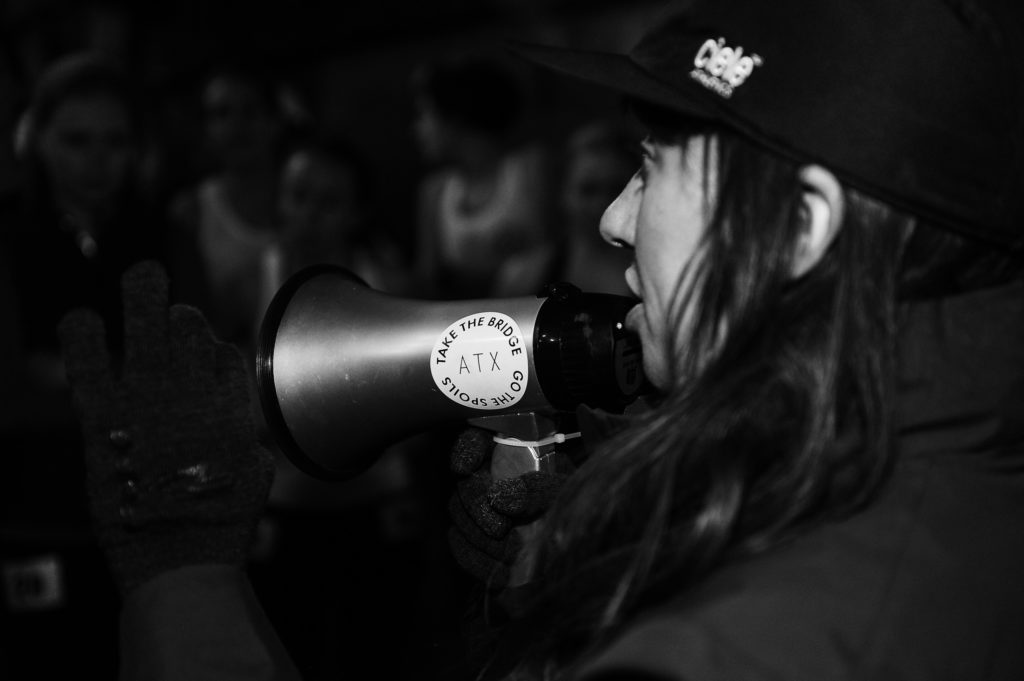
Initially a friend from Portland, who was also in New York and was working as a Nike run leader, taunted Budworth; “He said I wasn’t a real runner – so I said ‘screw you’”. That was all the motivation Budworth needed to double down on running.
“I’d be leaving the office at 11pm” Budworth tells me “and my colleagues would say to me ‘you know you can take a cab at this time of night’. But I would want to run home. Those runs were my moment of calm.”
At the time Budworth was living in Brooklyn, at the time a hip and up-and-coming neighbourhood (many would argue that it has now up-and-come, with gentrification in full effect). Budworth’s work was in Manhattan. So her running route home would involve crossing the Brooklyn Bridge.
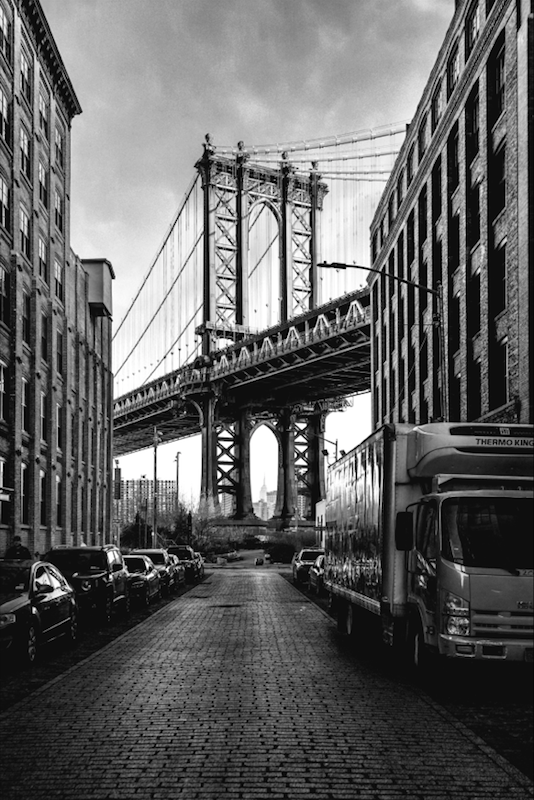
The Brooklyn Bridge was designed by John Augustus Roebling. It took 15 years for Roebling to convince the city of New York to commission him to build the bridge. Before construction had even started, Roebling’s foot was crushed in an accident. He had to have his toes amputated, developed an infection and died in 1869.
John Roebling’s son, Washington, took over responsibility for the bridge from his father. He was injured during the early phases of building the bridge and suffered almost total paralysis. Washington Roebling resorted to overseeing the construction from the window of his apartment, which had a perfect view of the work.
On 24 May 1883 the bridge was officially opened to great fanfare. The 21st President of the United States – Chester A. Arthur – crossed the bridge with Manhattan Mayor Franklin Edson to be greeted on the far side by Brooklyn Mayor Seth Low. Washington Roebling was unable to attend the celebrations, instead having a celebration dinner in his apartment with friends.
On the opening day over 150,000 people walked, rode or drove 486.3m – or 1,595 feet 6 inches – over the East River.
After a few years in New York, Budworth was a regular runner. She joined a club – the New York Harriers. Soon Budworth was the club president. And one of her responsibilities was organising the club’s 5km race. This was an event designed to increase awareness of the club and also generate some income.
But the race was already dwindling. “The problem was that we were competing with a lot of other races. The New York Road Runners were putting on some great events and given the choice a lot of runners would choose one of their races over the Harrier’s” Budworth says matter-of-factly.
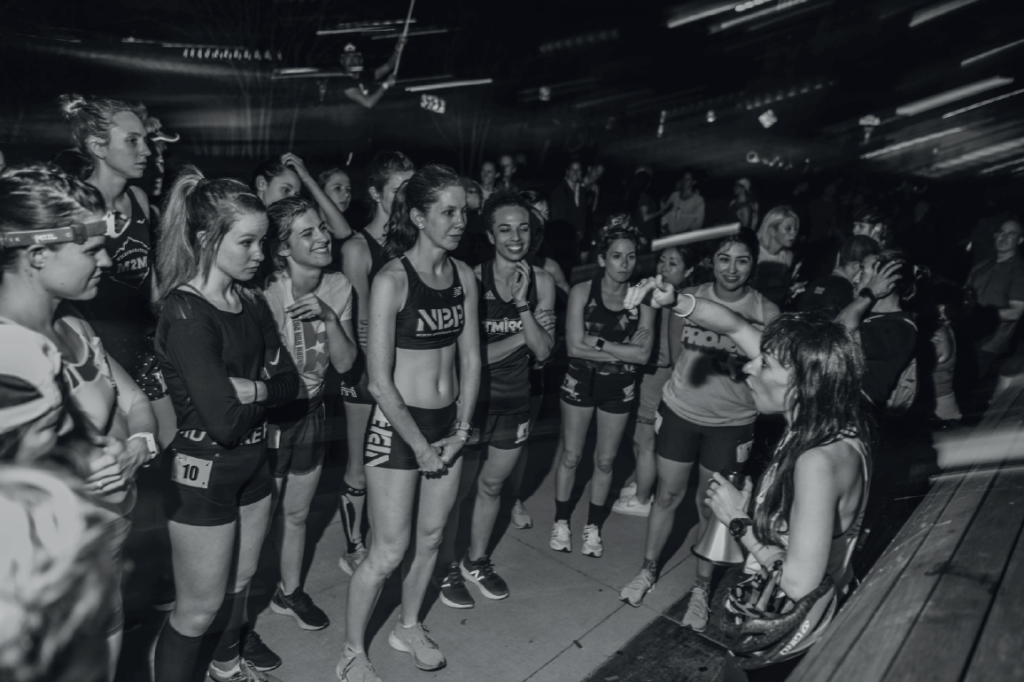
Around that time, Budworth had the chance to race the first Red Hook Crit running race. Shortly afterwards Budworth was part of an Orchard Street Runners’ race. Both of these experiences opened her mind to the possibility of races that were not the usual offerings. Here was a style of racing that was totally contrary to the monotony of the standard races put on by the likes of the New York Road Runners.
The Midnight Half was possibly the final piece in the puzzle: “I only found out about the race a couple of days before it and worked out my route two hours before the start. I won the prime and came second”. Budworth knew that she needed to do something.
Credit for deciding that her race series should involve bridges is partly given to Budworth’s husband at the time: “He said ‘you love running over bridges in training – you could race there’” Budworth tells me.
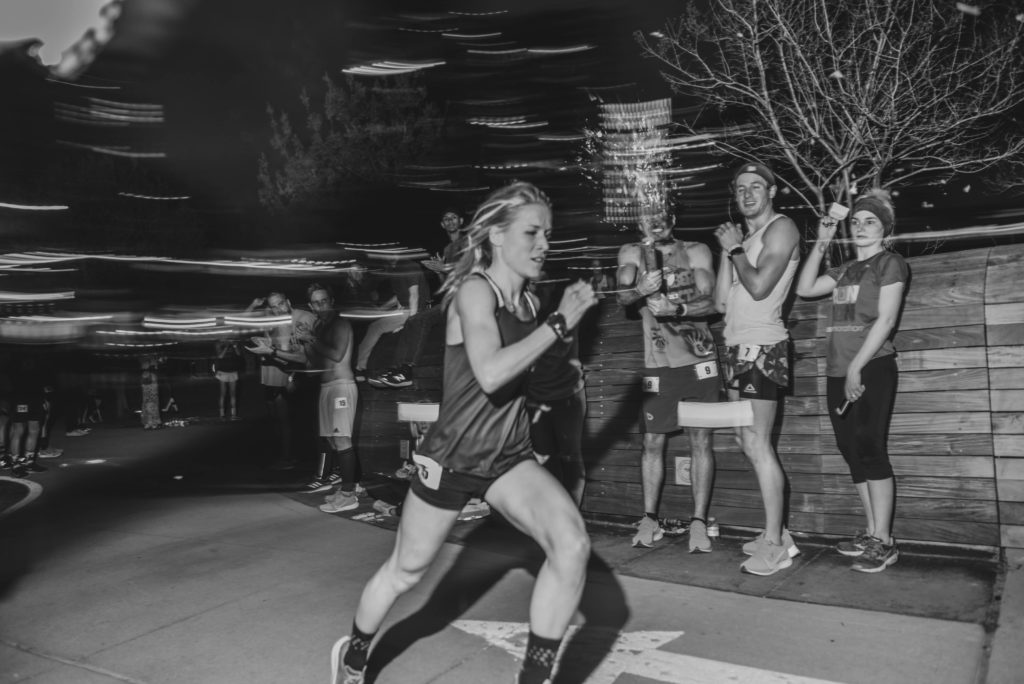
But there were other practical considerations. Out of respect to Joe DiNoto from Orchard Street Runners and David Trimble from Red Hook Crit, Budworth wanted to put on a race that was totally different. Plus she figured that running across a bridge removed a lot of the risk associated with crossing streets and busy junctions in New York City. Bridges – especially the long ones – offered a much longer uninterrupted route.
The Take The Bridge race series was born as a summer series of races in New York. From the very start, Budworth was determined to include as many different elements of the running community in New York as possible. So she instigated a process of having a host club or crew for each event. “We should all be friends with all the teams and crews” explains Budworth “When I was at the Harriers, I had friends in other teams and before the start of races, I’d be going to talk to them. My clubmates would ask me why I was chatting with other club members. I just think we’re all supposed to support one another.”
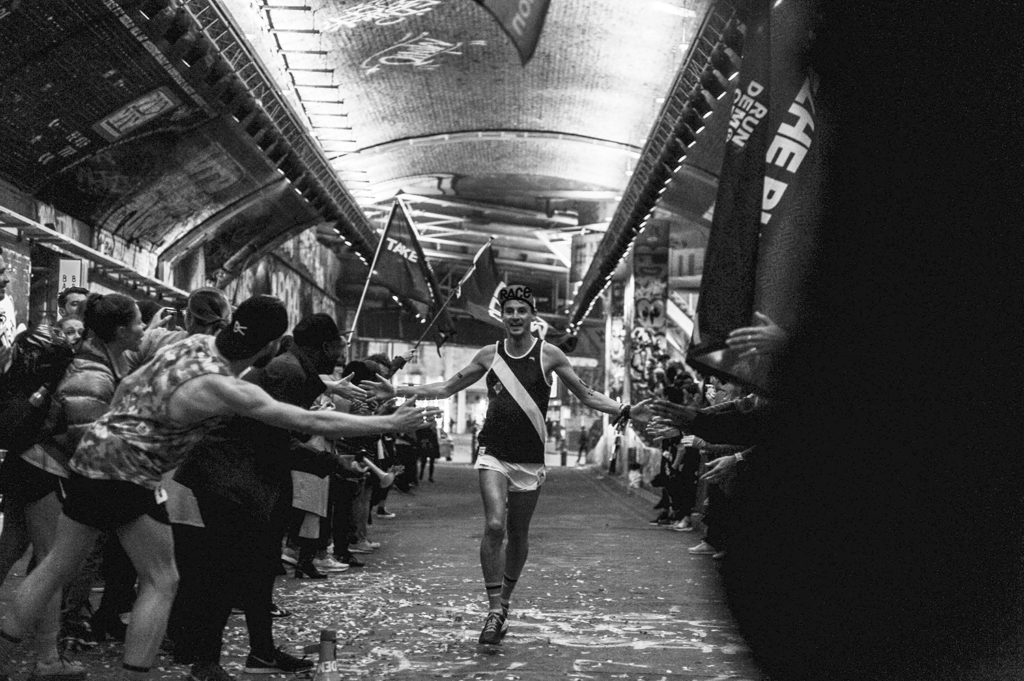
Recently Take The Bridge has taken to the road, with Budworth organising races in different cities – Portland, Boston, Austin, Chicago – and even different continents, with a race in London.
The race series gives Budworth the chance to expand her mission of connecting runners – irrespective of their club or crew affiliations – beyond the confines of New York City. And indulge a particular interest in bridges.
There is a very clear intimacy between Budworth and the bridges she encounters on her travels. The way Budworth carefully composes shots of bridges for her social channels hints at a fascination that goes beyond what most people think about a river or valley crossing. Indeed when we talk about the future for Take The Bridge, Budworth leans in and says, almost conspiratorially “I think the series could develop around bridges that people would love to run over – imagine all the crews and clubs from around the world converging on a special bridge to race over it together …” she trails of almost wistfully.
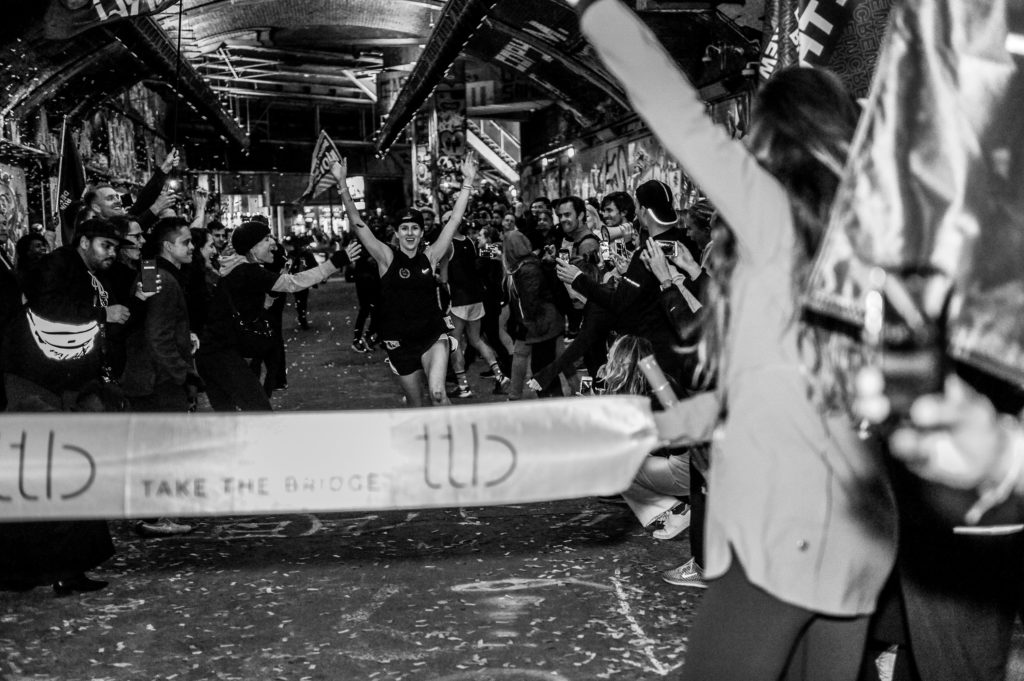
I ask Budworth whether this love of bridges comes from her background as an architect? “You know what, perhaps it does” she says “And actually a friend recently pointed out that David from Red Hook Crit and Joe from Orchard Street Runners have architecture in their backgrounds. Perhaps being an architect means that we are obsessed with details and that is what means we are very meticulous when it comes to organising races?”
Or maybe it is simpler than that. Maybe Budworth just loves bridges and the opportunity they represent as a unique route for running fast.


